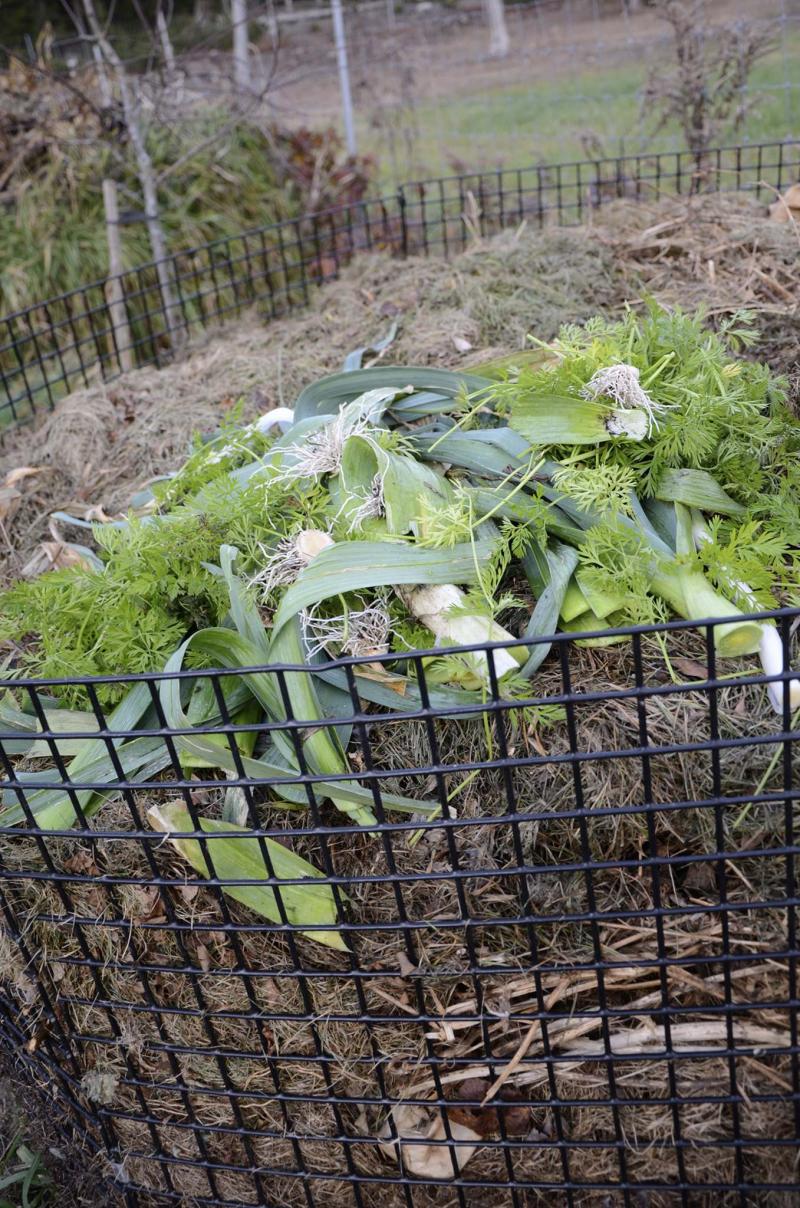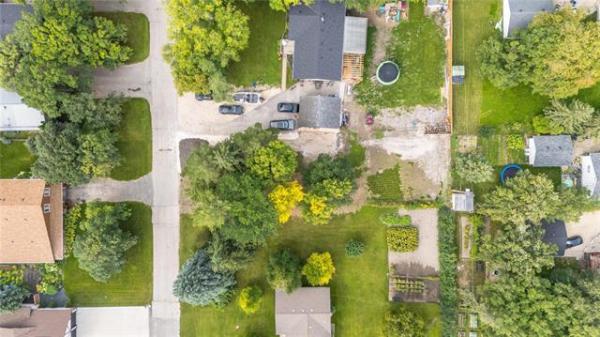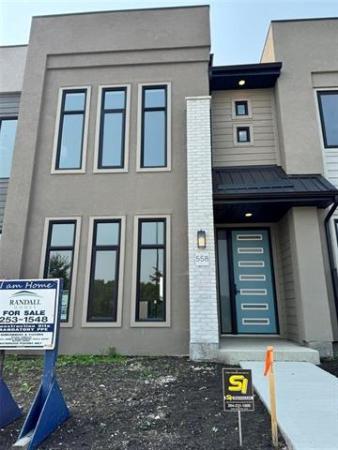
Barbara Damrosch
Composting reduces the amount of methane gas produced at landfills and creates nutrient-rich soil for growing.
When my boys were in elementary school, their science teachers launched a program in the cafeteria called the ORT Report, in which the students measured their food waste.
The goal was to cut down on their environmental footprint.
According to the dictionary, an ort is "a morsel left at a meal." The kids measured their orts by scraping their plates into bins lined up at the back of the cafeteria. There were bins designated for food waste, recycling, utensils and plates. The children then weighed the bin of food waste and graphed it on a large chart in the cafeteria. They used their math skills to add the day’s amount to the overall total and to see how they were tracking against other classes and compared with past days and weeks.
This program taught my kids what was recyclable and made them think before they helped themselves to food they might not eat.
They have asked to undertake a similar program at home with their younger sister. As you can imagine, I am not eager to line up bins of waste in my kitchen or to invest in a large scale, but the idea alone has certainly resulted in us observing how much waste we produce. The boys have also been commenting on how many garbage bags we take to the trash each week. I like to think they care because they are becoming environmentally conscious, but my guess is it’s actually because they are tired of carrying the bags.
According the U.S. Environmental Protection Agency, the average American disposes of almost 4½ pounds of trash a day. Of that amount, 20-30 per cent is food scraps and yard debris that can be composted to help the earth instead of hurt it.
As my boys calculated, if 10 per cent of the population cut down on landfill waste by this amount, there would be a lot less pollution. Sophisticated math, boys.
So we have decided to start composting again; we had stopped a few years ago when we moved and ditched our old compost tumbler. I thought perhaps the technology had changed during this period. Surprisingly, it really hasn’t; there are a few tried-and-true ways to compost, even for those of us living in the city.
Why compost?
When food scraps go into a landfill, they create methane gas that enters our environment and warms the planet. The water in food scraps also combines with other landfill garbage to create toxic sludge that then seeps into our water system and earth. If we kept food scraps out of landfills, not only would we reduce the size of our landfills, but we’d also produce less methane and toxic sludge.
Compost also benefits the environment because it reduces the need for chemical fertilizer; compost soil is naturally richer in nutrients and has a finer texture for growing. Compost requires less water as it more effectively holds onto moisture. Growing vegetables in compost tends to produce more nutrient-rich vegetables.
How to compost
Mix equal parts of green nitrogen-rich materials (food scraps, flowers, plants) with brown carbon-rich materials (dry leaves, shredded paper, dryer lint, straw) and add water. Turn and mix regularly.
Backyard pile: This option is best for individuals with a large outdoor space in a less-urban environment. Find a dry, shady spot near a water source. Once you have started the pile, cover with a tarp to keep moist, and turn over regularly to aerate.
Compost tumblers: These are ideal for folks living in the city who either do not have the space for a backyard pile or are worried about rats and other unwanted animals. Turn your tumbler regularly to mix and aerate.
Vermicomposting: Composting with worms makes the most nutrient-dense soil and is easy to do inside and in small spaces, but also requires the most maintenance.
Pick up and delivery: Services exist in some locales that will deliver you a bin for your food scraps that it will collect weekly or monthly to create composted soil for local urban farms, city-wide programs, community gardens and your own backyard.
Drop off: Residents can drop off food waste for compost at designated locations in many cities.
What to compost at home: As Compost Cab says on its website, "If it grows, it goes." Also, many restaurants now use compostable plates, napkins and cups.
What not to compost at home: Ashes from coal or charcoal, cat litter, dog waste, fish scraps, meat, oils and grease, milk, cheese, yogurt, sawdust and wood shavings from chemically treated wood.
How to get compost soil for your yard and garden: If you subscribe to one of the compost services, they can return some of the composted, healthy soil for you to use in your yard or garden. Even if you don’t participate by composting your own food scraps, you can purchase soil from them.
Commercial services and special events
Contact your school or business to start a commercial program. It takes just one call to one of these compost companies to get it going.
Seidenberg is co-founder of Nourish Schools, a D.C.-based nutrition education company, and co-author of The Super Food Cards, a collection of healthful recipes and advice.
— Washington Post



